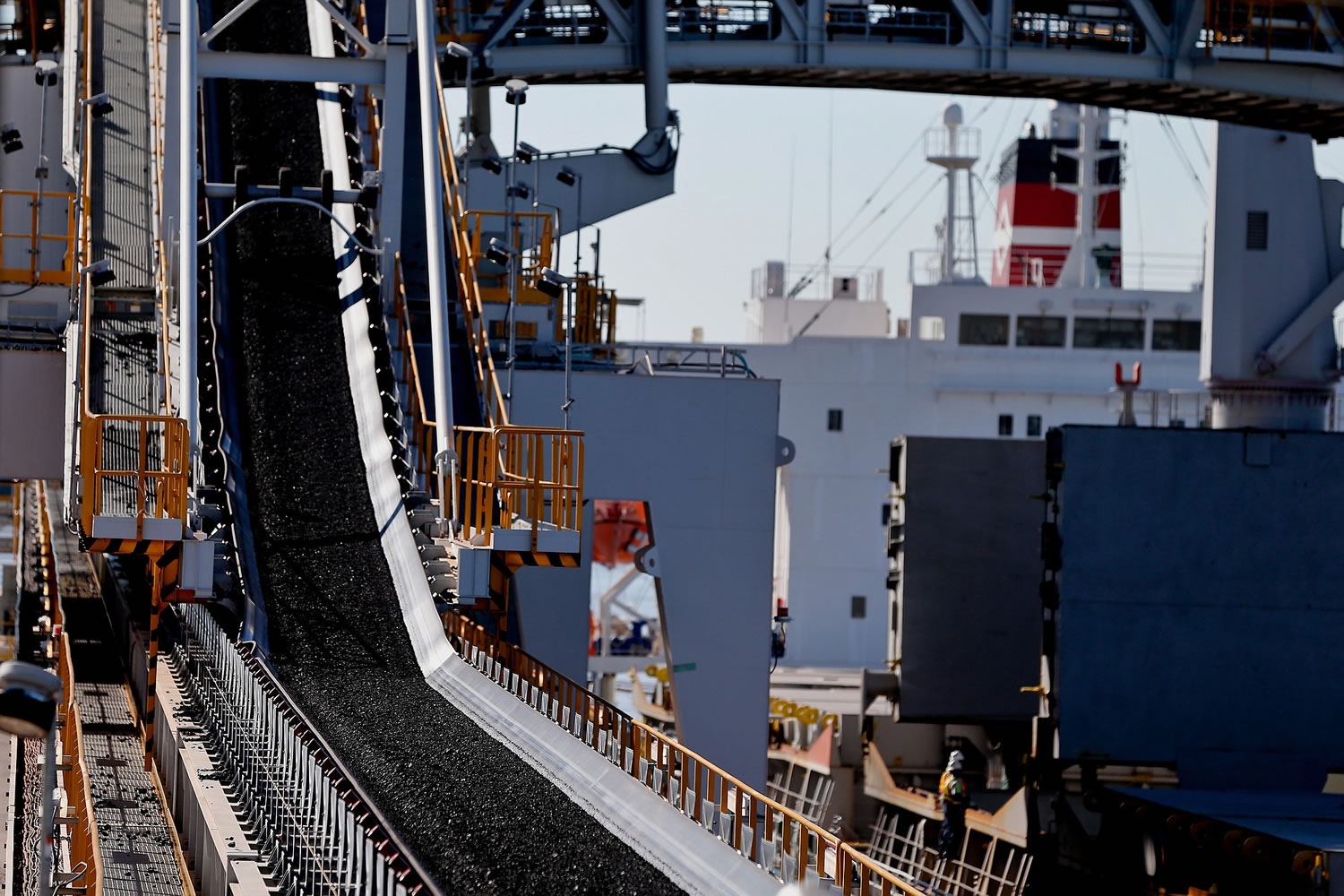SAN FRANCISCO — When it comes to exporting American coal, the West Coast’s loss is the Gulf Coast’s gain.
While environmental opposition has stymied plans to build terminals in California and the Pacific Northwest, the Mississippi River town of Darrow, La., has a new $300 million export facility. It’s part of a regional expansion that will increase capacity by 66 percent to 119 million metric tons by 2017, or more than half the national total, according to New York-based Doyle Trading Consultants.
At least $898 million, or 64 percent of the total $1.4 billion companies such as Ambre Energy Ltd. were planning to invest on the West Coast, is being spent on terminals in the Gulf of Mexico. Even as U.S. coal exports have fallen by 23 percent since 2012, producers are betting that foreign sales will rebound because a supply glut means their prices are now below competing cargoes from Australia and South Africa.
“In some parts of the U.S. you have the lowest cost coal in the world,” Carlos Fernandez Alvarez, a senior coal analyst at the International Energy Agency in Paris, said by phone Nov. 7. “If you have the infrastructure to export that coal it will be competitive in many scenarios.”
Exports from Galveston, Texas, surged 29-fold since 2000 while volume at Mobile, Ala. doubled and New Orleans saw a more than 15-fold increase, government data show.
The United States is poised to use less coal because of increased energy efficiency, tighter environmental regulations and bountiful natural gas supplies as a result of the shale drilling boom.
The country’s 5.2 percent jump in coal consumption last year should reverse as at least 32 coal-fired power plants are retired, Energy Department data show. President Barack Obama proposed in June to cut carbon dioxide pollutants by 30 percent from 2005 levels by 2030, mostly by reducing the use of the fuel.
Coal is the country’s most abundant energy resource, with enough reserves to last 180 years. That compares with 87 years for natural gas and 88 years for crude oil, government projections show.
Exports of coal will increase 33 percent to 128 million tons by 2020 and 148 million by 2030, the Energy Department forecast in its 2014 Annual Energy Outlook.
U.S. producers will seek a greater share of an 8 billion ton world market, Kevin Crutchfield, chief executive officer of Alpha Natural Resources Inc., the biggest U.S. producer of metallurgical coal, said Sept. 30.
China, which accounts for about half of global demand, will increase consumption by 6 percent annually over the next two years before easing to a pace of 2 percent growth, according to Jeff Archibald, a senior technical specialist at ICF International Inc., a Fairfax, Va.-based analytical company.
A global glut contributed to the decline in U.S. exports. While the seaborne market for coal has increased to a record 1 billion tons, it will take at least two years for the surplus coal to be absorbed, according to IHS Inc., an Englewood, Colo.-based researcher.
Possibly past the peak
U.S. exporters may have already experienced their best days back in 2012 when shipments for both thermal and metallurgical coal peaked. Deliveries of power station coal to foreign buyers will drop 20 percent by 2019 from 2012 levels, while coking coal will slide 29 percent, Morgan Stanley, a New York-based investment bank estimates.
Shipments of U.S. steelmaking coal will decrease to 37 million tons next year from a peak of 58 million tons in 2012, and gradually rise to 41 million tons by 2019, while thermal deliveries will see a 23 percent gain over the next 5 years, Joel Crane, an analyst at Morgan Stanley in Melbourne, said in an Oct. 8 report.
Benchmark Australian coal prices fell 26 percent to $62.10 a ton this year, South Africa dropped 19 percent to $67.60 and Colombia lost 8.1 percent to $62.50. Coal on the New York Mercantile Exchange has declined 10 percent to $51.60 a ton. European benchmark coal for next year has plummeted 16 percent to $72.55 a metric ton as of Friday.
On a fall morning at Impala Terminal Burnside’s operation in Darrow, on the Mississippi about 61 miles from New Orleans, a giant shovel feeds Illinois Basin coal into the Turquoise Ocean, a 600-foot-long cargo ship.
Impala, a unit of Trafigura Beheer, spent $300 million on the former aluminum smelter site and earmarked another $150 million to install rail capacity as demand grows, Jonathon Shull, the company’s commercial manager, said in an interview at the port.
The operation, which also ships bauxite, grain and other bulk commodities, can receive coal barges and load ships at a pace of 8,000 tons an hour.
Companies expanding in the Gulf include Foresight Energy, a producer of Illinois Basin coal, which paid $73 million for a terminal in Convent, Louisiana, in 2011. It’s doubling capacity to 22.5 million tons, data from Wood MacKenzie show. In 2012, Kinder Morgan Inc., a Houston-based pipeline and terminals company, said it would spend $400 million on expanding its Gulf Coast coal export operations.
Groups including the Sierra Club, the largest U.S. environmental organization, stopped a plan by Bowie Resource Partners for a terminal in Oakland earlier this year, and plans for six new operations in the Pacific Northwest have either been halted or slowed by opposition and litigation. These include Brisbane, Australia-based Ambre Energy’s proposed Coyote Island coal-export terminal on the Columbia River in Oregon.
Environmentalists lost a battle Nov. 7 when the U.S. Army Corps of Engineers granted Ram Terminals a permit to build an export facility in Myrtle Grove, La. The company is a venture between Ramaco, a Lexington, Ky.-based coal producer, and Armstrong Coal in Madisonville, Ky.
“You’re talking about Louisiana and Texas,” said Andy Roberts, principal analyst for international thermal coal at Wood Mackenzie, an Edinburgh-based consultancy. “It’s much more friendly toward exporting coal.”



